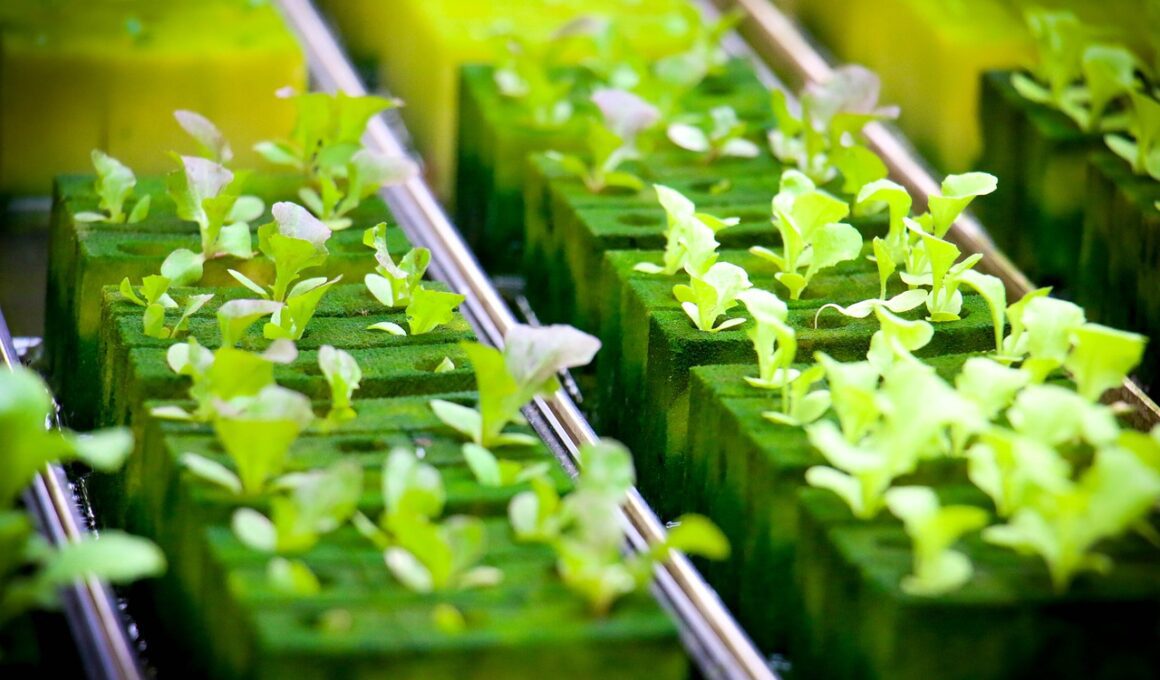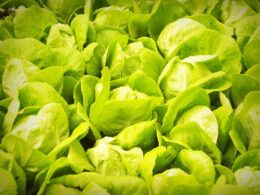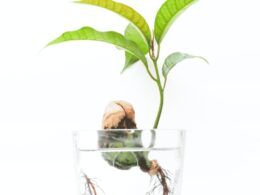Are you interested in growing your own carrots but hesitant to try it in soil? Hydroponics might be the solution for you. Hydroponics is a method of growing plants without soil, using nutrient-rich water instead.
Many vegetables can be grown successfully in hydroponics, including carrots. Carrots are a great addition to any hydroponic garden. They are packed with nutrients such as vitamin A, potassium, and fiber. Hydroponic carrots are also known for their sweet and crunchy taste. Plus, growing carrots in hydroponics allows you to have control over the growing conditions, including the amount of water and nutrients they receive, resulting in healthier and more consistent crops.
However, there are some considerations to keep in mind when growing carrots in hydroponics, including the type of hydroponic system to use and the proper maintenance of the system. In this article, we will explore the benefits and drawbacks of growing carrots in hydroponics and provide tips on how to successfully grow and harvest hydroponic carrots.
Benefits and Drawbacks of Growing Carrots in Hydroponics
You’ll be pleasantly surprised by the upsides and downsides of cultivating carrots in a hydroponic system.
First up, let’s talk about nutritional value. Hydroponically grown carrots are packed with nutrients and vitamins, providing a healthy option for your diet. Additionally, hydroponic systems can produce carrots with higher yields compared to traditional soil-based methods.
However, there are also some drawbacks to consider. While hydroponically grown carrots can have higher yields, they may not have the same depth of flavor as their soil-grown counterparts. Additionally, hydroponic systems require a significant investment in equipment and maintenance, which may not be feasible for everyone.
Overall, growing carrots in hydroponics can be a great option for those looking to add more nutritious veggies to their diet and increase their yield potential. But it’s important to weigh the benefits and drawbacks before diving in. Keep in mind that while hydroponics can produce larger yields and healthier plants, it may not always result in the same depth of flavor that soil-grown carrots can provide.
Choosing the Right Hydroponic System
Picking the appropriate hydroponic setup is crucial to ensuring your plants thrive. When it comes to growing carrots, you have a choice between vertical and horizontal hydroponic systems. Vertical systems are ideal if you have limited space as they take up less floor space. On the other hand, horizontal systems are much wider and can accommodate more plants.
Ultimately, the choice depends on your space availability and the number of carrots you want to grow. Cost-effective options for setting up a carrot hydroponic system include the deep water culture (DWC) and the nutrient film technique (NFT) systems.
The DWC is one of the easiest and cheapest systems to set up, making it ideal for beginner hydroponic gardeners. NFT systems are also cost-effective and require less water and nutrients than DWC, making them more environmentally friendly. However, NFT systems require more maintenance and attention to ensure the roots are getting enough water and nutrients.
When setting up your hydroponic system for carrots, it’s important to consider the cost and space availability. Choose a system that fits your needs and budget. Remember, the right hydroponic system can make all the difference in the success of your carrot crop. With the right setup, you can enjoy fresh, healthy carrots all year round.
Preparing the Hydroponic System
To prepare your hydroponic system for growing carrots, you’ll need to focus on three key areas:
-
Choosing the right container: Consider the size and shape of your carrots and make sure the container is deep enough to accommodate their growth.
-
Preparing the nutrient solution: Follow the instructions carefully and ensure that you maintain the appropriate pH levels.
-
Planting your carrot seeds: Make sure to space them out properly and cover them with a layer of vermiculite to promote healthy growth.
Remember to double check each of these steps in order to ensure optimal growth for your carrot plants.
Choosing the Right Container
When it comes to setting up your hydroponic system, choosing the right container is important for the growth of your carrots. The container size is a crucial factor to consider since it affects the amount of water and nutrients your plants receive.
In general, a container that is 6 to 8 inches deep and wide is ideal for growing carrots in hydroponics. This size allows for enough space for your carrot plants to grow their roots and receive the necessary nutrients.
In addition to container size, you also need to consider the material options for your hydroponic container. Plastic containers are a popular choice since they’re lightweight, inexpensive, and easy to move around. However, if you’re looking for a more sustainable option, you can choose a container made of recycled materials like PVC pipes or even repurpose old containers like buckets or planters.
Ultimately, the container you choose should be able to hold water and nutrients, provide enough space for your plants to grow, and be durable enough to withstand the weight of your plants.
Preparing the Nutrient Solution
Now that you’ve got your container set up, it’s time to mix up a nutrient solution that will give your hydroponic carrots everything they need to thrive.
Start by measuring out the nutrients according to the instructions on the package. It’s important to get the ratios right, as too much or too little of certain nutrients can harm the plants.
Next, make sure to test the pH levels of the solution. Hydroponic carrots grow best in a slightly acidic environment, around a pH of 5.5-6.5. If the pH is too high or too low, it can affect the plant’s ability to absorb nutrients and can stunt growth.
Finally, consider using organic nutrients in your hydroponic setup. These can provide additional benefits such as improved soil structure and increased microbial activity, leading to healthier and more productive plants.
Planting Carrot Seeds
Let’s dive into planting some seeds and watch as our hydroponic setup comes to life!
First things first, you need to select the right type of carrot seeds for hydroponic cultivation. Look for varieties that are suitable for container gardening and have a shorter maturity time. These seeds will germinate faster and produce a bountiful harvest in no time.
When it comes to germination techniques, make sure you follow the instructions on the seed packet carefully. Generally, you want to soak the seeds in water for a few hours before planting them in the growing medium. Keep the trays in a warm and humid environment to encourage germination.
Optimal growing conditions for carrots include a temperature range of 60-70°F and a relative humidity of 70-80%. With proper temperature control and good germination techniques, your carrot seeds will sprout and grow into healthy plants.
Can Onions Be Grown Using Hydroponic Systems?
Growing onions hydroponically is indeed possible. Hydroponic systems provide a controlled environment, allowing onions to thrive without soil. The nutrient-rich water solution supplies essential minerals directly to the roots, ensuring efficient absorption. With proper lighting and optimal temperature conditions, onions can be grown hydroponically, resulting in healthy and flavorful bulbs.
Maintaining the Hydroponic System
To maintain your hydroponic system, you need to regularly monitor the nutrient levels of your plants. You should also adjust pH levels to ensure your plants are getting the right nutrients they need. Lastly, preventing pests and disease infestations is essential to keep your plants healthy. Keep an eye on these key points to maintain a successful hydroponic system.
Monitoring Nutrient Levels
You can maintain optimal hydroponic plant growth by regularly monitoring the nutrient levels in your solution. Measuring EC levels and pH testing are key components of nutrient monitoring. By measuring the electrical conductivity (EC) levels, you can ensure that your plants are receiving the proper amount of nutrients.
Similarly, pH testing allows you to adjust the acidity or alkalinity of your solution to match the needs of your plants. Benefits of nutrient monitoring include increased plant growth and yield, as well as preventing nutrient deficiencies or toxicities.
By regularly testing and adjusting your nutrient solution, you can ensure that your plants have everything they need to thrive. Additionally, nutrient monitoring can help you identify any potential problems before they become too severe, allowing you to take corrective action quickly.
Overall, regularly monitoring your nutrient levels is a critical component of successful hydroponic gardening.
Adjusting pH Levels
If you want your hydroponic plants to thrive, it’s essential to adjust the pH levels of your nutrient solution. The pH level of your nutrient solution determines the availability of nutrients to your plants.
If the pH level is too high or too low, your plants won’t be able to absorb the nutrients they need to grow. This can result in stunted growth, yellowing leaves, and poor yields.
To ensure accurate pH adjustment, you should invest in a good quality pH meter. This will allow you to monitor the pH level of your nutrient solution and make adjustments as needed.
There are several techniques you can use to adjust the pH level of your nutrient solution, including adding pH up or pH down solutions, using baking soda or vinegar, or adding citric acid or lemon juice. It’s important to follow the instructions carefully and make small adjustments at a time to avoid over or under correcting the pH level.
By taking the time to adjust the pH level of your nutrient solution, you’ll be able to provide your hydroponic plants with the optimal conditions for growth and ensure a healthy and bountiful harvest.
Preventing Pest and Disease Infestations
Preventing pest and disease infestations is crucial for maintaining a thriving hydroponic garden, as unwanted invaders can wreak havoc on your precious plants. One of the best ways to prevent pests and diseases is to practice good hygiene in your hydroponic system.
Cleanliness is key, so make sure to regularly sanitize your equipment and tools. Avoid touching plants with dirty hands, and always use clean water in your system.
Another important way to prevent pests and diseases is to carefully monitor your plants for any signs of trouble. Keep an eye out for wilting, yellowing leaves, or any unusual growth patterns.
If you do notice any issues, act quickly to address them and prevent them from spreading. This may involve removing affected plants, adjusting your nutrient levels, or using organic pest control methods such as neem oil or insecticidal soap.
By staying vigilant and taking proactive measures to prevent pests and diseases, you can help ensure a healthy and bountiful hydroponic harvest.
Harvesting and Storing Hydroponic Carrots
When growing hydroponic carrots, it’s important to know when to harvest them to ensure maximum flavor and nutrition. You can determine when to harvest by checking the size and color of the carrots, as well as their taste.
When harvesting, use a sharp knife or scissors to cut off the leaves and gently pull the carrot out of the growing medium.
To store your freshly harvested hydroponic carrots for longevity, wrap them in a damp paper towel and place them in the refrigerator.
Determining When to Harvest
Determining when to harvest hydroponic carrots is crucial for optimal growth, flavor, and texture. The age of the carrot plant is the first thing to consider, which usually takes around 60-75 days to mature, depending on the variety and growing conditions. You can determine the age by counting the number of days since planting or measuring the length of the carrot tops. When the tops reach 4-6 inches, it’s usually a sign that the carrots are ready to be harvested.
Another factor to consider is the size and shape of the carrots. Carrots that are too small may not be fully matured and can have a bitter taste, while carrots that are too large can be woody and unappetizing. As a general rule, harvest carrots when they are about 1 inch in diameter at the thickest point.
To harvest, gently pull the carrots out of the growing medium, being careful not to damage the roots of any neighboring plants. By following these harvesting techniques, you can ensure that your hydroponic carrots are not only delicious but also healthy for consumption.
Harvesting Techniques
Now that you know how to determine when your hydroponic carrots are ready for harvesting, it’s time to learn about the different techniques you can use to harvest them.
First, it’s important to note that there are many different carrot varieties, and each one may require a slightly different technique for harvesting. However, there are a few general tips that apply to all varieties.
When harvesting your hydroponic carrots, it’s best to use a sharp knife or scissors to cut the greens off at the base of the plant. This will help to avoid damaging the carrots themselves. You can then gently pull the carrots out of the growing medium, being careful not to break or damage them.
It’s important to note that hydroponic carrots may have a slightly different yield than those grown in soil, so you may need to adjust your harvesting technique accordingly. Additionally, the intensity of light in your hydroponic system can have an impact on the growth of your carrots, so be sure to monitor this closely and adjust as needed.
Storing Carrots for Longevity
To ensure your harvest lasts as long as possible, you’ll want to follow these simple tips for storing them properly. Carrot preservation is all about keeping them fresh and crisp for as long as possible.
One of the easiest and most common techniques is to store them in a plastic bag in the refrigerator. Make sure to wrap them in a paper towel before placing them in the bag to absorb any excess moisture.
Another method for long term storage is to store them in sand or sawdust. This technique involves layering the carrots in a container with a layer of sand or sawdust in between each layer of carrots. This helps to prevent moisture from building up and causing the carrots to rot.
By using different preservation techniques, you can extend the life of your carrot harvest and enjoy fresh, delicious carrots for months to come.
Frequently Asked Questions
What is the best type of nutrient solution to use for growing carrots in hydroponics?
When growing carrots in hydroponics, it’s important to consider the right hydroponic nutrient ratios and pH levels for optimal growth.
You can achieve this by using a nutrient solution that is high in potassium and phosphorus, while also maintaining a pH level between 6.0 and 6.8.
To further enhance the growth of your carrots, you can also add nutrient solution additives such as calcium, magnesium, and iron.
These additives will help to strengthen the roots, increase nutrient uptake, and boost overall plant health.
By following these guidelines, you can ensure that your carrot crop thrives in a hydroponic environment.
Can carrot seeds be directly planted in a hydroponic system, or do they need to be started indoors and transplanted?
If you’re thinking about starting carrots hydroponically, it’s important to know whether you should start the seeds indoors or plant them directly in the hydroponic system.
While it’s possible to plant carrot seeds directly in the hydroponic system, the success rates of hydroponic carrot production are generally higher when the seeds are started indoors and then transplanted.
This allows the plants to establish a stronger root system before being introduced to the hydroponic environment.
Overall, starting carrots hydroponically can be a great way to grow fresh, healthy produce in a controlled environment, but it’s important to follow best practices for optimal results.
Are there any special lighting requirements for growing carrots in a hydroponic system?
To maximize your carrot growth rate in a hydroponic system, it’s important to consider the lighting intensity and spectrum. Carrots require a specific range of light spectrum to grow properly, so it’s crucial to choose a grow light that provides the right balance of red and blue light.
Additionally, the lighting intensity should be around 600-800 umol/m2/s for optimal growth. Keep in mind that too much light can be harmful to your plants, so it’s essential to monitor the lighting conditions carefully.
By providing the right lighting conditions, you can ensure healthy and robust carrot growth in your hydroponic system.
How long does it typically take for hydroponic carrots to reach maturity and be ready for harvest?
If you’re wondering how long it typically takes for hydroponic carrots to reach maturity and be ready for harvest, the answer is around 60-75 days.
The hydroponic carrot growth rate can be influenced by several factors, including the ideal hydroponic carrot pH level, which should be kept between 5.5 and 6.5.
Maintaining the proper pH level is crucial to achieving optimal growth and yield.
It’s important to note that while hydroponic carrots may grow faster than traditional soil-grown carrots, they require careful attention and maintenance to thrive.
By providing the right environment and monitoring the pH levels, you can enjoy a bountiful harvest of fresh and healthy hydroponic carrots.
Are there any specific pests or diseases that are common in hydroponic carrot production, and how can they be prevented or treated?
To prevent pests in hydroponic carrot production, you should regularly check and maintain the cleanliness of your system. It’s also important to keep the environment around your hydroponic system free from debris and other potential breeding grounds for pests.
Effective disease treatments include implementing a preventative program that includes sanitation, proper nutrient balance, and pest control. If you do encounter a disease outbreak, it’s essential to quickly identify the problem and take swift action to contain it.
By following these steps, you can ensure healthy and thriving hydroponic carrot plants.
Conclusion
So, are carrots good for hydroponics? The answer is yes! Growing carrots in a hydroponic system can provide many benefits, such as faster growth and higher yields.
However, there are also some drawbacks to consider, such as the need for proper maintenance and a carefully chosen hydroponic system.
To successfully grow carrots in hydroponics, it’s important to choose the right system for your needs and prepare it properly. Once your system is set up, maintaining it is key to ensuring healthy growth and a bountiful harvest.
Finally, when it’s time to harvest your hydroponic carrots, proper storage techniques will help you enjoy their fresh, flavorful taste for longer.
Overall, growing carrots in hydroponics is a great option for those who want to try something new and reap the benefits of this innovative growing method. By following the tips and techniques outlined in this article, you can successfully grow healthy, delicious carrots in your own hydroponic system. So why not give it a try? Your taste buds (and your wallet) will thank you.









